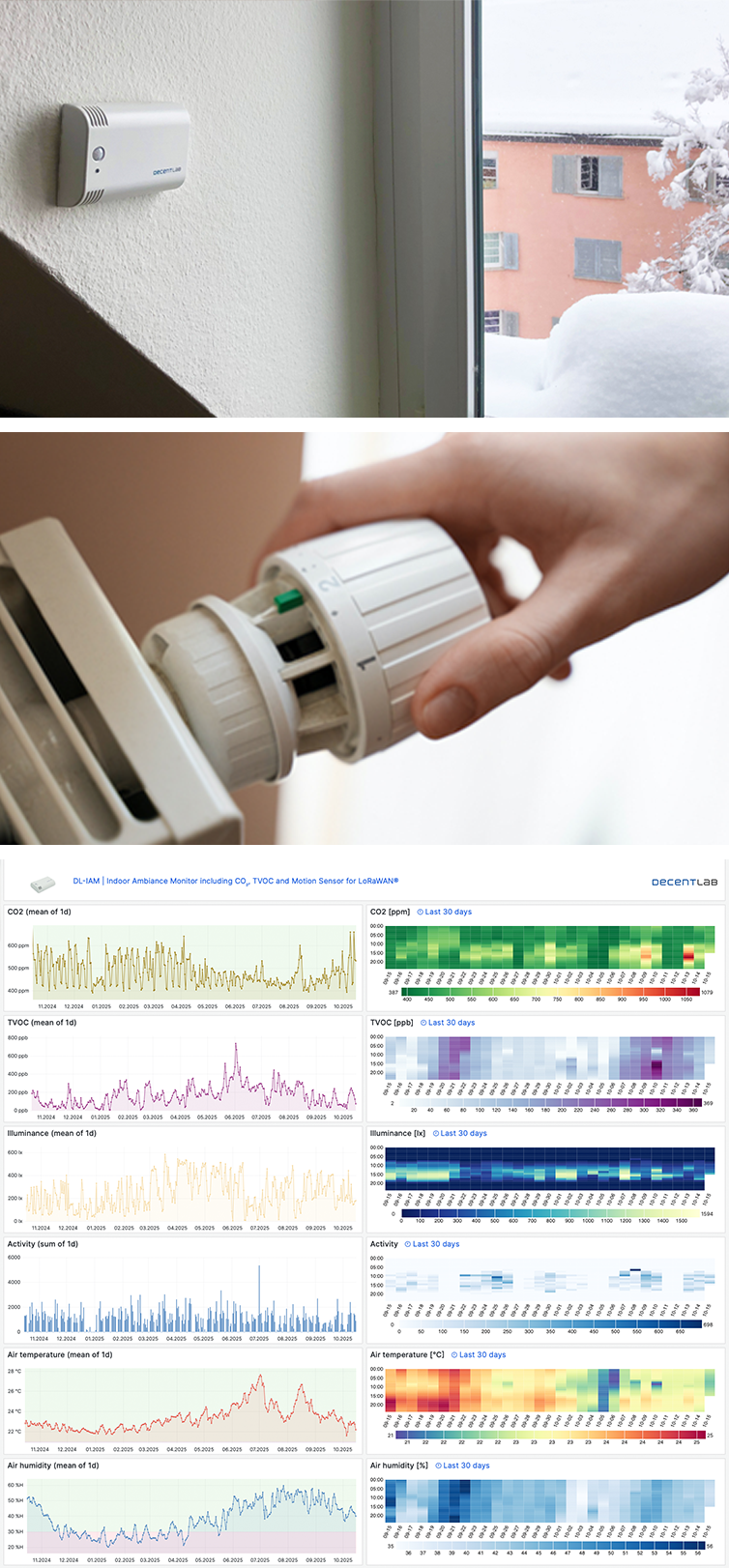Why Maintaining Good Indoor Air Matters in Winter
/In winter, spending more time indoors with windows closed and the heating on directly affects air quality, health, and well-being.
CO₂ levels rise quickly in enclosed spaces. Around 1000 ppm, many people feel tired, unfocused, or irritable. A study by Graz University of Technology found that 75 % of classrooms exceeded this level, rising to almost 90 % in winter, with peaks up to 6900 ppm.
Humidity is also crucial. Heating can lower it below 30 %, drying out mucous membranes, weakening immunity, and increasing infection risk. A study by Stanford University found that viruses survive longer in dry air, while 40–60 % humidity activates natural antimicrobial processes.
Particulate matter (PM2.5) is another important factor. A study published in Building and Environment demonstrated that effective ventilation and filtration can significantly reduce indoor PM2.5 levels, highlighting the role of proper air management in maintaining healthy indoor environments.
To avoid heat loss and high energy costs, ventilation should be done strategically—based on CO₂ or humidity measurements, for example. Modern sensors can help balance healthy air with energy efficiency.
Recommended values
CO₂: below 1000 ppm
Relative humidity: 40–60 %
Room temperature: 20–22 °C
Devices for indoor air monitoring:
DL-IAM, DL-PM
Visit for real-time demos: DL-IAM, DL-PM


